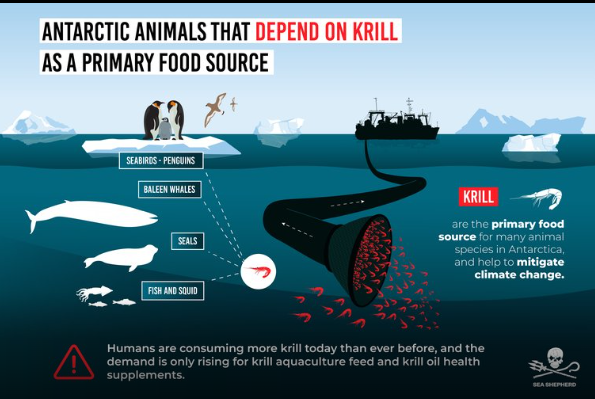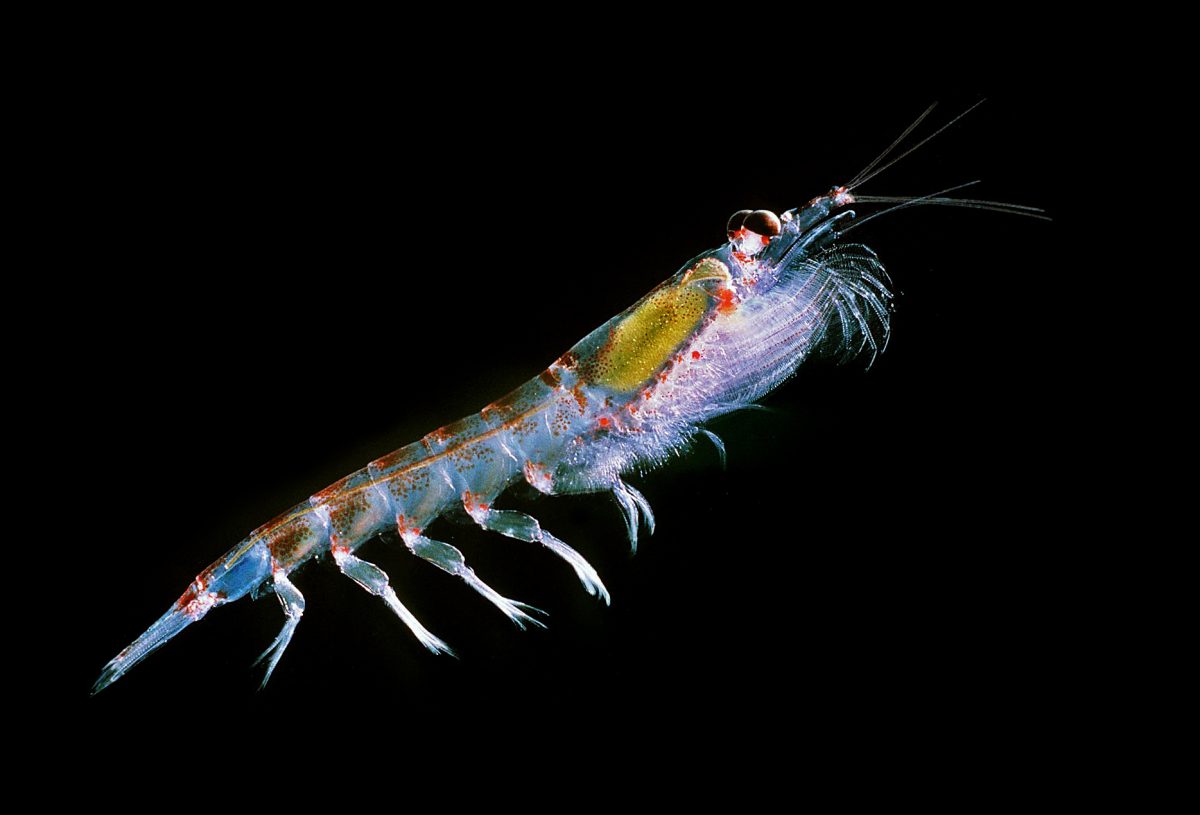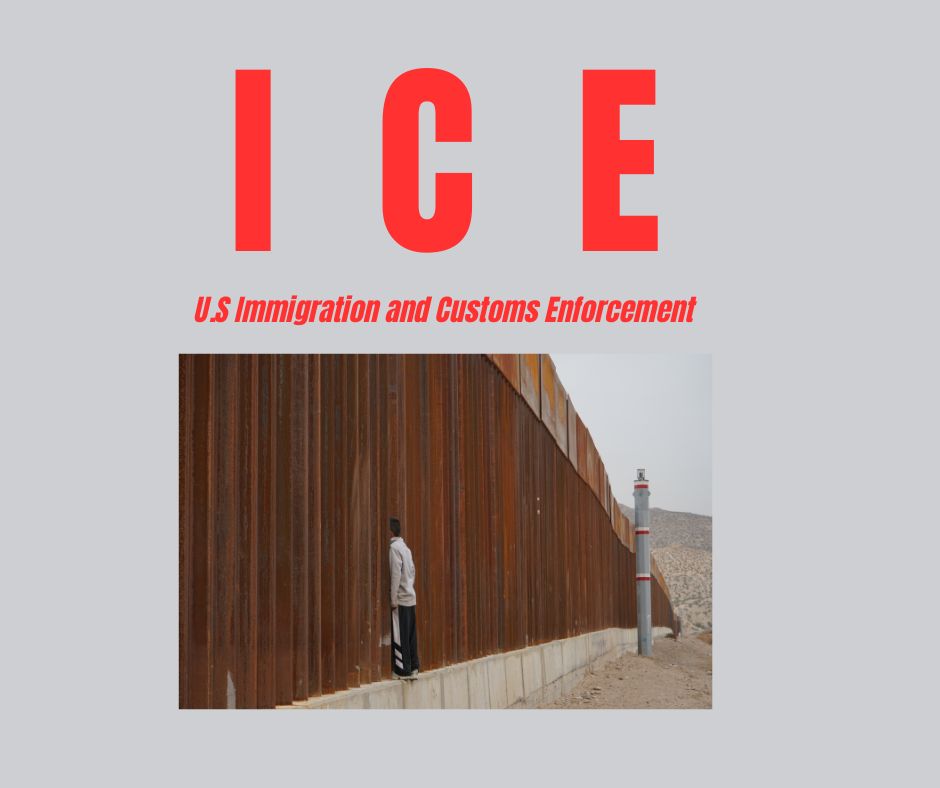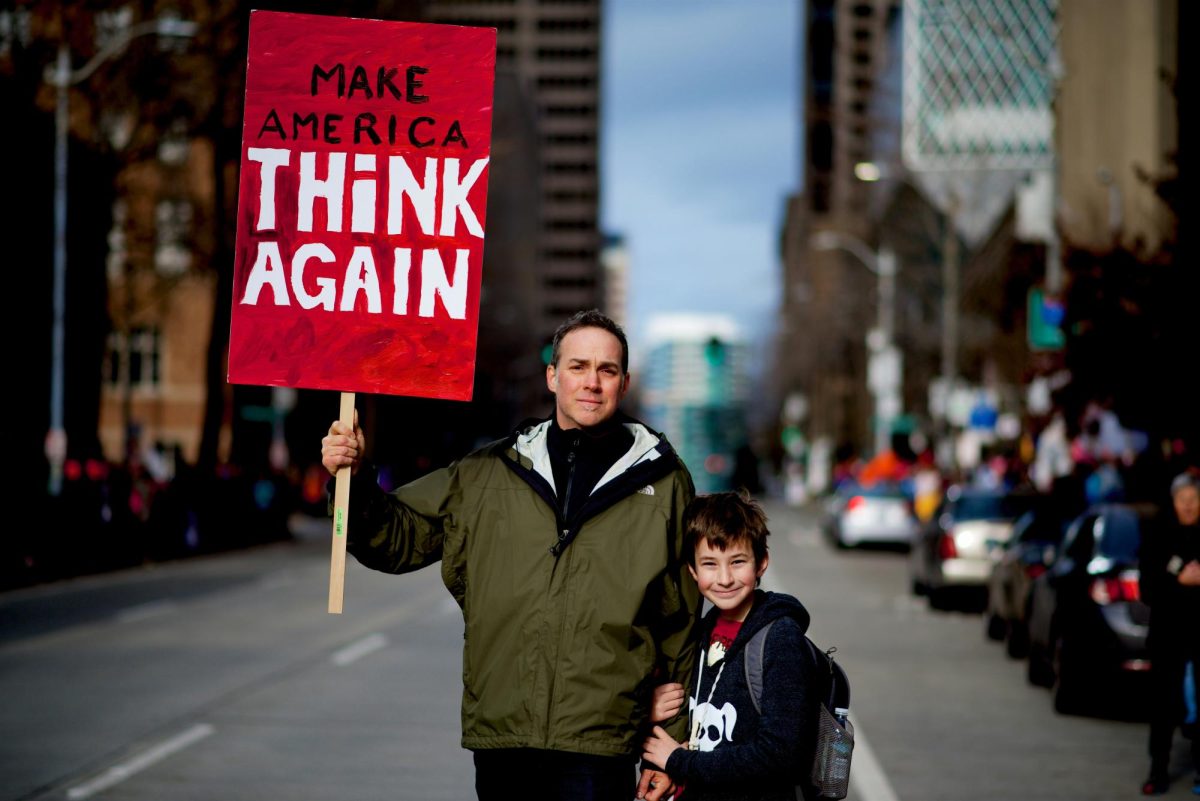The Antarctic ecosystem is threatened, again, and conservationists are taking action. The Antarctic krill population has shrunk by 80% since the 1980s and fishing companies are trying to increase quotas. Krill also absorbs a lot of carbon dioxide. In an article by The World Wildlife Fund (WWF) they stated, “This is estimated to equal the sinking of 23 megatons of carbon annually.”
Sea Shepherd Global, the Bob Brown Foundation and other ocean conservation societies are calling for a temporary stop on krill fishing and argue that it’s the only way to protect the Southern Oceans fragile ecosystem. Scientists and conservationists want the Commission for Conservation of Antarctic Marine Living Resources (CCAMLR) to make marine protected areas (MPAs) as a way to help protect the Antarctic Krill population. The fishing companies such as Aker Biomarine, Jiangsu Sunline Deep Sea Fishery Co. Ltd, PescaChile, Liaoning Pelagic Fisheries Corporation, China National Fisheries Corporation, Fujian Zhengguan Fishery Development Corporation, Jeong-il Corporation, Dongwon Industries Corporation and Rimfrost AS are asking the CCAMLR for an increase in the krill quota. Currently, The CCAMLR currently has the quota set to less than 1% of the estimated 60 million tons of krill. This restriction is considered “precautionary.”

Krills Impact on the Environment:
Krill absorbs a lot of carbon dioxide according to the WWF, “This is estimated to equal the sinking of 23 megatonnes of carbon annually.” Algae grows from a combination of sunlight and carbon dioxide. The algae then gets eaten by the krill and their carbon waste gets dropped down to the bottom of the ocean. When predators eat krill the carbon still in their body gets moved to the predators and that carbon gets stored in their bodies for decades. Antarctic Krill: Carbon Conveyor Belt of the Southern Ocean | Pew this video by Pew does a great job of explaining it. Robert Morgan, a biology and forensics teacher at Ida B. Wells High School, said, “Any species especially on the first trophic level; primary consumers will be a huge carbon sink, second only to ones that do photosynthesis themselves.” This massive carbon sink is very important, if we get rid of it we could heavily hurt the environment a lot more.
Morgan said, “A lot of ocean fishing, especially when you are not using hooks but you are trawling and dragging nets, is going to be really really carbon intensive. You are pushing big diesel engines burning millions of gallons a day for a fleet. It can be very intense.” These trawlers are not only burning millions of gallons of fuel, but also removing an animal that would take this carbon out of the air.
Krills Spot in the Antarctic Food Web:
Krill are the center of the food web in Antarctica. They feed whales, Penguins, squid, seals and sea birds. Krill make up 96% of all of the protein consumed by these animals. If we shrink the krill population or kill it off entirely it will have a massive effect on populations of all life in the Southern Ocean.
“If you destabilize an ecosystem it will end up causing one of those other species that depend on krill to go extinct,”Morgan said. In this case, almost all life in the Southern Ocean will die off, not to mention the species that migrate down to the Southern Ocean.
Derek MacDicken, AP Environmental Science and Biology teacher at Ida B. Wells High School said, “We will see starvation of a lot of large bathing whales there is no question,” he said. “The scary thing is that the ramifications would be much bigger than I think we could just generally anticipate. It’s not just going to be whales, you’re going to see species that migrate through and are going to other areas and we would have emaciated, unhealthy populations there, what feeds on those.” Getting rid of krill would have a massive chain effect on the whole world from climate change to ocean wildlife.

What Krill is Used for:
Krill are used for supplementation, as an alternative to fish oil and is even advertised as a more ecologically sound alternative. Krill are also used for aquaculture. They grind up the krill and use it as fish feed. MacDicken said, “A lot of people don’t understand what krill is used for, it’s kind of an out of sight out of mind thing,” he said. “The question has to be asked when it comes to fish farms, is it ecologically savvy for us to be removing massive quantities of natural feed to feed out farm fish when the idea of having farm fish is to take the strain off of natural populations, but you are removing a food source for natural populations, so are we really doing what we are trying to do with this decision. So one finding an alternative food source for fish farms is one, and we already have the answer for that. The answer is going to be insect-based.”
History of Krill Fishing:
Antarctic krill fishing has been going on since the 1960s but has grown exponentially since the 2000s. In 1982, the Soviet Union caught 528,000 metric tons of krill. In 2001 the demand for krill was 104,000 metric tons and in 2020 it rose to be 451,000 metric tons of krill and has continued to rise. In 2019, the catch of krill was 380,000 tons. Due to overfishing, the Krill trawlers indirectly catch whales and there are no laws on trawlers going after krill that are being hunted by whales. This has led to krill trawlers accidentally killing four humpback whales in 2021 and one in 2022.
Paul Watson the founder of Sea Shepherd said it best, “If the oceans die, we die.” If we kill off all of the krill or if we fish enough krill that it can’t support the Antarctic animals the Southern Ocean will die. We will lose a major carbon carbon sink and many species will die off.








